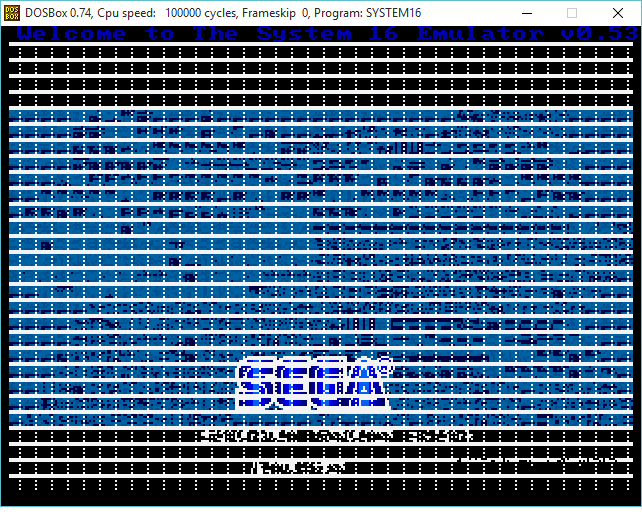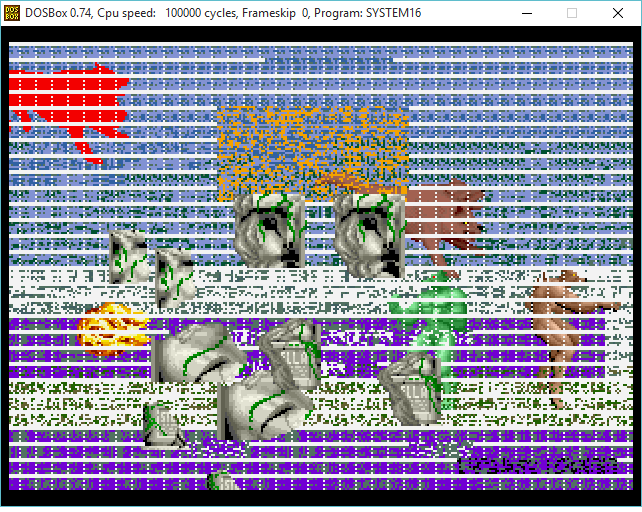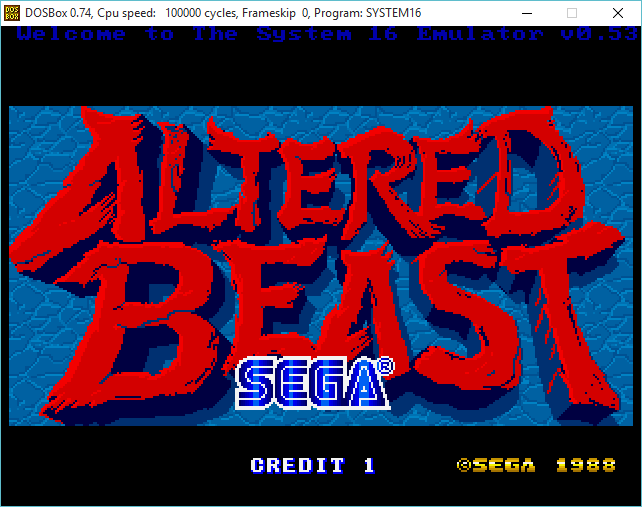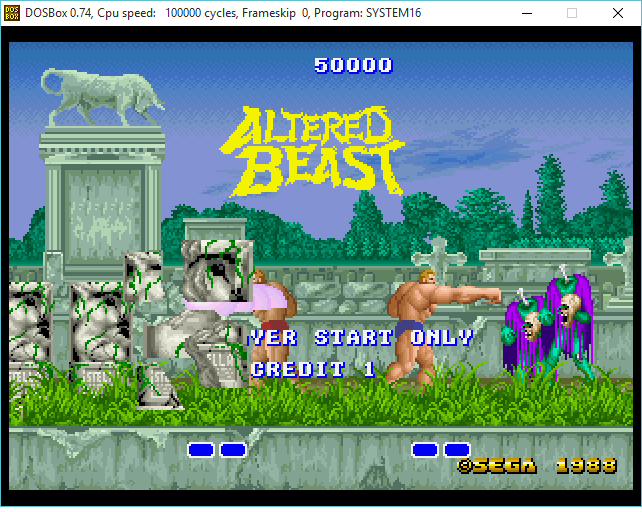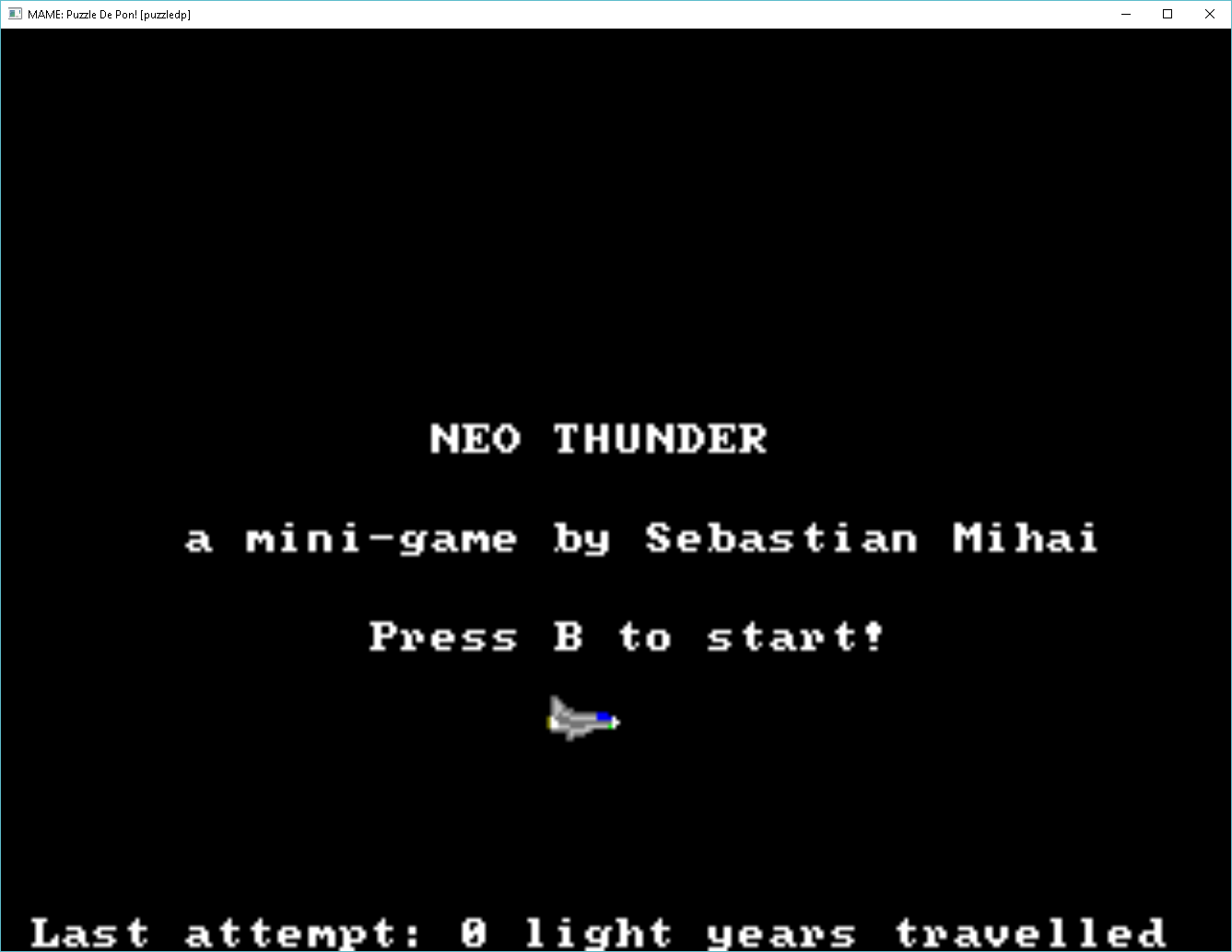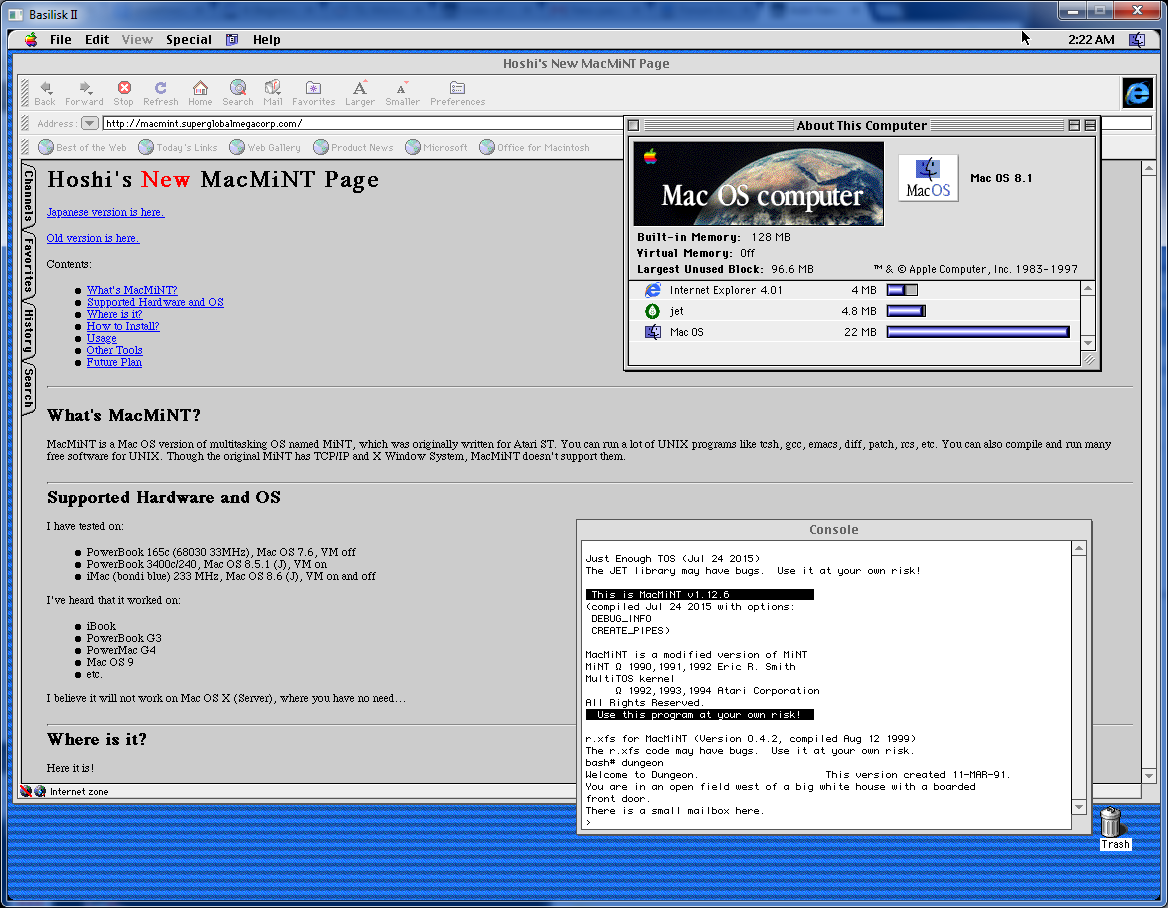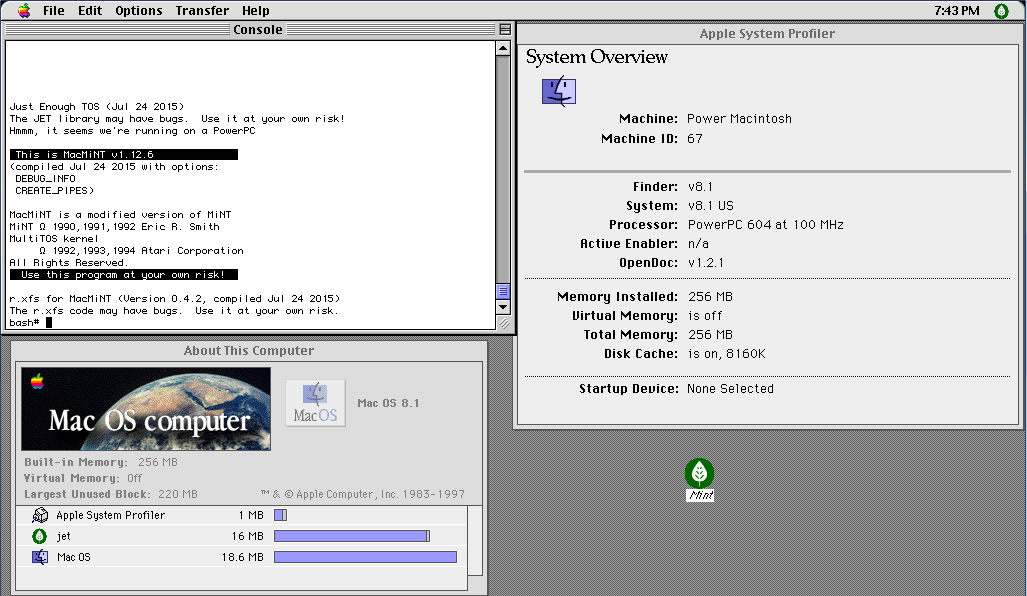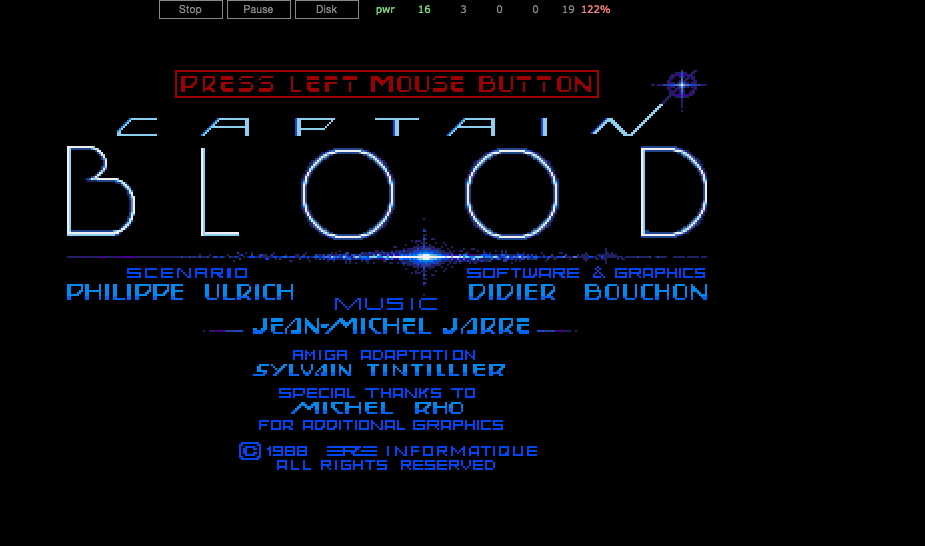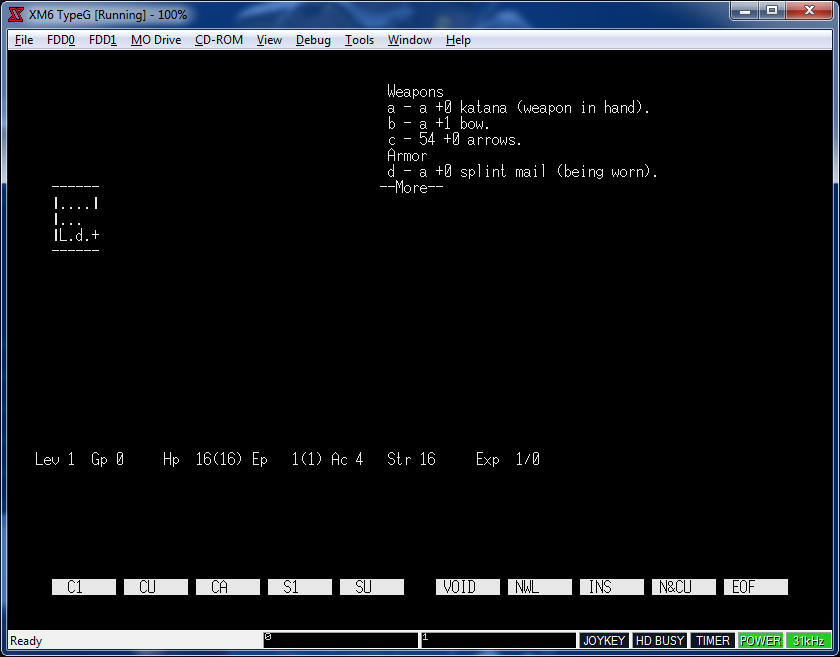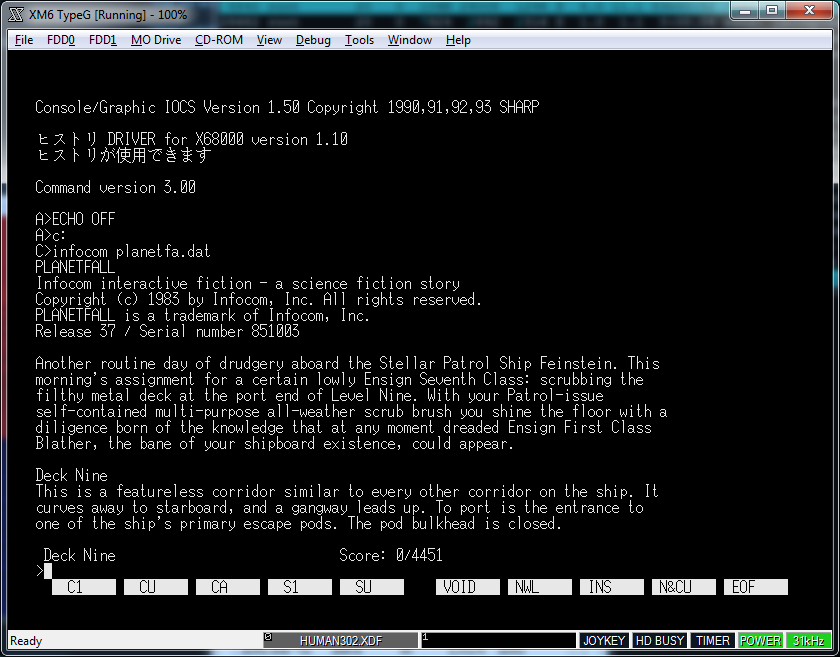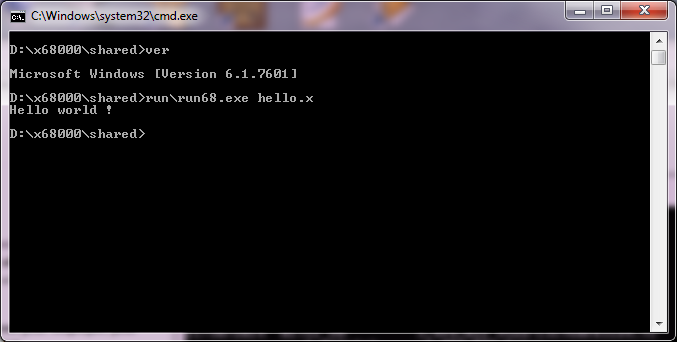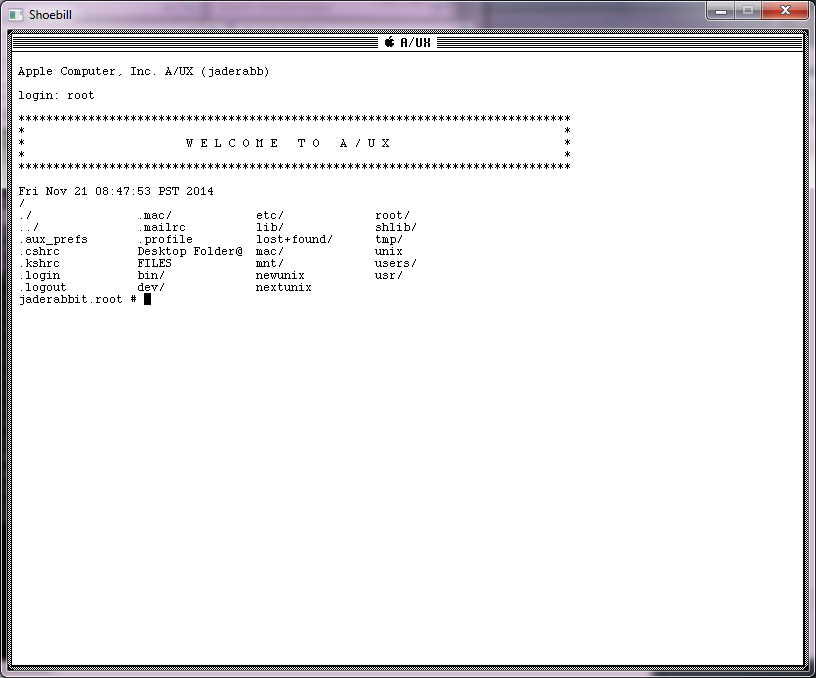A long long time ago, back when I got a Pentium 100 the wonderful world of emulation was really starting to be possible with such a high powered CPU. First was the simple Game Boy emulators, then a Commodore 64 emulator, the incredible Amiga Emulator, the beginnings of SIMH (back when it was only a PDP-11 emulator), and then I found the SEGA emulator, System 16.
It was really cool being able to play 16bit arcade games on the desktop, although rather slowly. From there everyone knows the rise of MAME. But while looking around for a small 68000 C compiler, I came across the source code to an older version of System 16, 0.53 on archive.org. Naturally it’s for MS-DOS, as was everything back in the day. Also slightly interesting is the 68000 emulation, written by Bernd Schmitd of UAE fame. So for the heck of it, I set about getting Thierry Lescot’s System 16 building again. I’ve never used allegro before, so it was a bit of a fight to get a version of it to actually build. It turns out that I should have been building version 2.11 with tools of that era (why on earth was I using GCC 4, and binutils 2.18?) and instead stick with GCC 2.7.2.2 and some much older binutils. And in no time I had build the library, and it’s examples. With that done, I was able to re-build System 16 with GCC 4.1.2 and get a binary!
Back in the day, I actually did have an Altered Beast arcade board. Sadly, it died in a move, someone near and dear just saw the PCB as “garbage” and tossed it. Sigh, but I did have ROM dumps, as I did a refresh of it forever ago. Anyways I still have the ROM files, so I guess that is nice.
Anyways I fired up the emulator and got what is known as the “jail bar” effect, which is from a bad ROM.
The System 16 splits it’s memory into a program space, a sprite memory bank, a tile memory bank, and RAM for stack and things like the palette. As you can see the program is certainly running, and the sprites are good. I did some poking around a bit later, and noticed that due to a logic bug, the texture ROMs are actually never loaded!
So, a quick patch, and now we get Altered Beast up and running!
Well, now isn’t that great!
Not that I would imagine anyone would really care, I mean MAME is a thing, and even from the readme:
Altered Beast : No sound emulation
So it’s pretty quiet. Additionally, the source is pretty restrictive:
These sources can’t be used for commercial purpose, any new version of the
emulator done with these sources must specify my name somewhere on the screen
et docs and I must be informed about any new release of the emulator.
For anyone interested you can find the source & binaries out on sourceforge.

